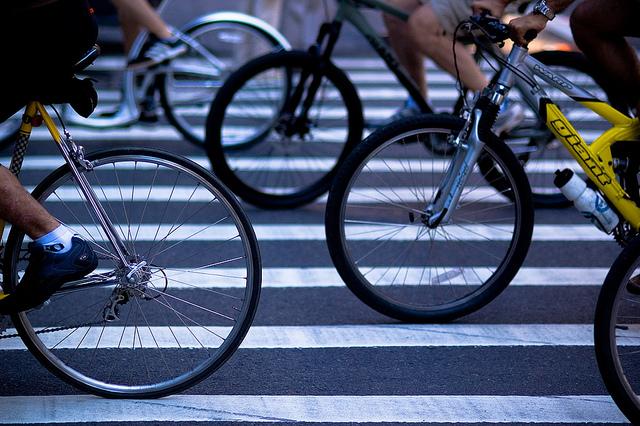In between classes, University Avenue is like New York during the lunch hour, minus a few hundred cars. The amount of students crossing intersections between the hours of 9 a.m. and 3 p.m. is substantial. If someone were to take an aerial shot of Charter Street and University Avenue, we would see the condensation of thousands of University of Wisconsin students into a crosswalk that is four feet wide. In the mass of students, bicycles are scattered about, often attempting to turn. They are wearing their headphones but few of them are wearing a helmet. They rarely signal or walk their bikes on the sidewalk, as is required. The lax bike safety combined with traffic, potentially slick roads and many tardy students has a potential for a messy intersection.
According to the Insurance Institute for Highway Safety, around two percent of all motor vehicle related deaths involve bicyclists. That means between the years 2002 and 2012, 7,630 bicyclists died while riding on the road. More than 80 percent of those crashes involved those who did not wear a helmet. Now, these numbers do not attempt to figure out the amount of death caused by driving a motor vehicle. Cars remain the most dangerous means of common transportation by far. This does not disparage the statistics for bike accidents, however. The most avid cyclists will continue to debate use of bike helmets, regardless of the numbers. Most UW students, however, don’t seem to consider them at all.
During a 45-minute period, I witnessed approximately 300 cyclists on campus. However, only 30 of these cyclists were wearing helmets, which is disheartening to say the least. That means nine out of 10 people are not wearing a device that will protect their head if they fall. The UW ranks in the top 10 public universities in the nation. It is in the middle of one of the most bike progressive cities in the country. The idea that so many intelligent people would not wear helmets seems illogical.
Mikael Colville-Andersen from Denmark spoke at a Ted Talk conference in 2008 about why we should not require cyclists to wear bike helmets. His reasoning was not related to head injuries or possible death. In fact, it was not a fear-based argument. Colvill-Andersen argued that when a city makes cycling without a helmet illegal, you see a reduction in people biking. If we put the emphasis on the fear of physical injury or death and combine that with a possible monetary fine, it becomes a deterrent. This will prompt people to put down the bike and pick up the car keys.
Colville-Andersen has the most convincing “anti-helmet” argument. It isn’t about helmets causing neck injuries or drivers being less cautious around protected cyclists. The heightened awareness of the dangers about biking without a helmet unintentionally causes people not to bike. His claim demonstrates not a push for riders to go bare, but a need for improved bike promotion and safety.
Madison has a good track record. We participate in Ride to Work Week and the national Bicycle Benefits programs. However, we need billboards about the safety in numbers study or personal testimonies about helmet success. We could have routes that spread into rural communities and have better medians to separate bikers and traffic. If we focus on bicycle promotion and safety, we will see a rise in helmet use.
I agree with Colville-Andersen. The eco-friendly, health-conscious “steel horse” should be encouraged. I am not calling for Madison to mandate that all bikers should wear helmets. We live in one of the country’s best biking cities, but I am calling for even more. I want people to know cycling improves physical health and helps avoid traffic congestion. It keeps us away from the dangers of driving a car. Most importantly, I want people to recognize that helmets may not be cool, but brain damage certainly isn’t either.
Mackenzie Krumme ([email protected]) is a junior majoring in international studies and intending to major in journalism.














